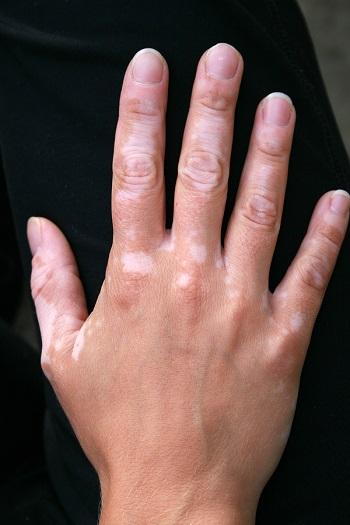What is Vitiligo?
posted: Jun. 14, 2019.
Find out how this pigmented skin condition is treated.
Are you or someone you love dealing with vitiligo? The Mayo Clinic reports that there are more than 200,000 new cases of vitiligo each year in the US alone. Vitiligo is a chronic disease where the melanin, which gives your skin its pigment, either dies or the body stops producing it. As a result, there are white patches of skin all over the body. So, you may be wondering how this condition occurs or how you can treat it. This is when it’s important to turn to your dermatologist.
What causes vitiligo?
Unfortunately, researchers still do not know why some people develop vitiligo. It may be the result of an autoimmune disease, where the body attacks the melanocytes in the skin. Some researchers also believe that something as simple as a sunburn or even emotional stress could cause vitiligo; however, the cause is still unknown.
Who is at risk for developing vitiligo?
Even though this condition can appear at any time in a person’s life it more commonly occurs in your 20's. It affects both men and women of all races; however, vitiligo is more noticeable in those with darker skin. Those with autoimmune disorders are often more likely to develop vitiligo than those who do not have an autoimmune disorder. Genetics may also play a role; however, parents with vitiligo won’t necessarily pass this condition onto their child.
What are the symptoms of vitiligo?
Vitiligo is characterized by large white patches of skin, which may appear anywhere on the body. These patches most commonly appear on the face, hands, feet, arms, and other sun-exposed areas. Sometimes the white patches will spread over time. How quickly the patches spread will vary from person to person; however, sometimes the patches won’t spread at all.
How is vitiligo treated?
It’s important to turn to a dermatologist that you trust if you think you or a family member is dealing with vitiligo. During your consultation, your doctor will examine your skin to determine how widespread and numerous the patches are so that we have a better idea what type of treatment will be the most effective.
We will also go through your medical history and ask you questions about your condition. Treatment for vitiligo, like most skin disorders, will not work overnight. In fact, there is often a trial-and-error period to try and find the best treatment option.
The most common types of vitiligo treatment include medication, light therapies, and surgery, all of which are designed to restore pigmentation back into the skin.
Prescribed medications may be applied topically or taken orally. Certain UVA/UVB light therapy treatments may also improve your condition. Skin grafting surgery may be recommended, in which your dermatologist will remove skin from another area of the body and apply it over the patches to hide them and even out skin tone.
Your dermatologist can also recommend a full-spectrum sunscreen to protect your skin when going outside, as well as any counseling and support you may need. If you or someone you love is looking for vitiligo treatment, contact your dermatologist today.

